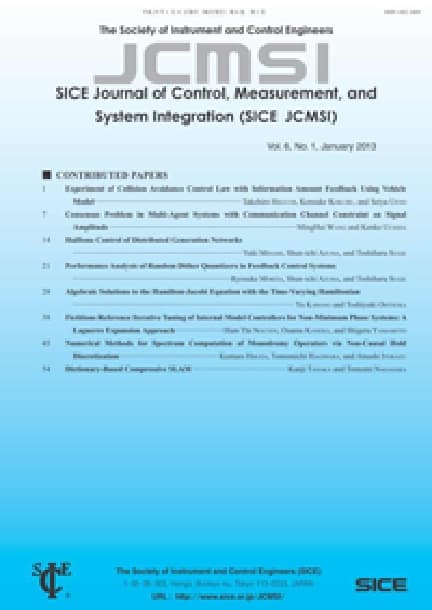Consensus Algorithm with Steady-State Optimization for Continuous-Time Multi-Agent Systems
Takanobu SHIDA, Hiromitsu OHMORI
pp. 69-73
DOI:
10.9746/jcmsi.7.69Abstract
In this paper, the authors propose a consensus algorithm for continuous-time multi-agent systems. Using the proposed algorithm, the states of all agents converge to solutions of a convex optimization problem. The constraint of the optimization problem is a condition for the consensus of the outputs, and the objective function is the sum of costs for steady-states of all agents. A Lagrange multiplier method is a hint to design the proposed algorithm. The algorithm is usable for multi-agent systems with a limitation of information exchanges.









